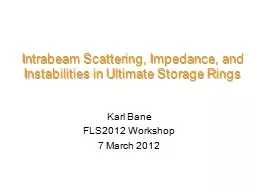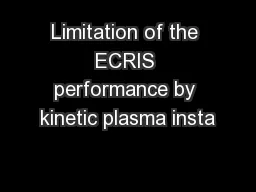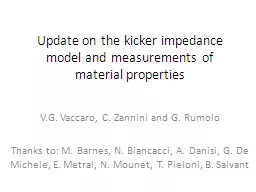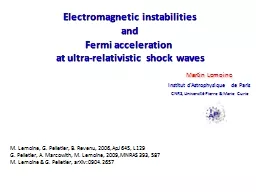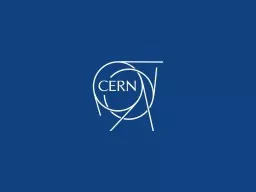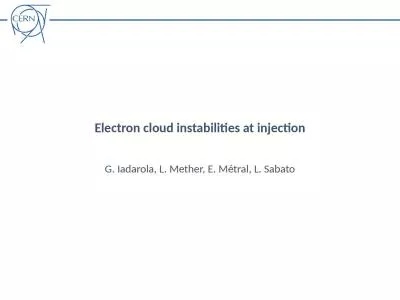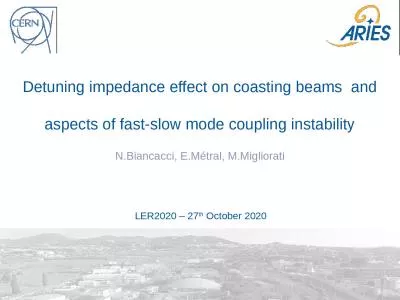PPT-Intrabeam Scattering, Impedance, and Instabilities in Ultimate Storage Rings
Author : cheryl-pisano | Published Date : 2018-11-02
Karl Bane FLS2012 Workshop 7 March 2012 Longitudinal microwave instability Coherent synchrotron radiation CSR Impedance scaling for small angle transitions Impedance
Presentation Embed Code
Download Presentation
Download Presentation The PPT/PDF document "Intrabeam Scattering, Impedance, and In..." is the property of its rightful owner. Permission is granted to download and print the materials on this website for personal, non-commercial use only, and to display it on your personal computer provided you do not modify the materials and that you retain all copyright notices contained in the materials. By downloading content from our website, you accept the terms of this agreement.
Intrabeam Scattering, Impedance, and Instabilities in Ultimate Storage Rings: Transcript
Download Rules Of Document
"Intrabeam Scattering, Impedance, and Instabilities in Ultimate Storage Rings"The content belongs to its owner. You may download and print it for personal use, without modification, and keep all copyright notices. By downloading, you agree to these terms.
Related Documents

